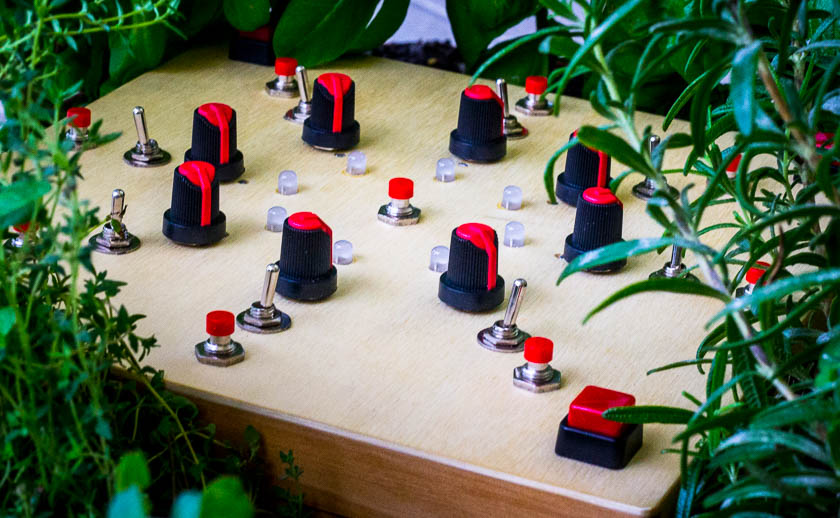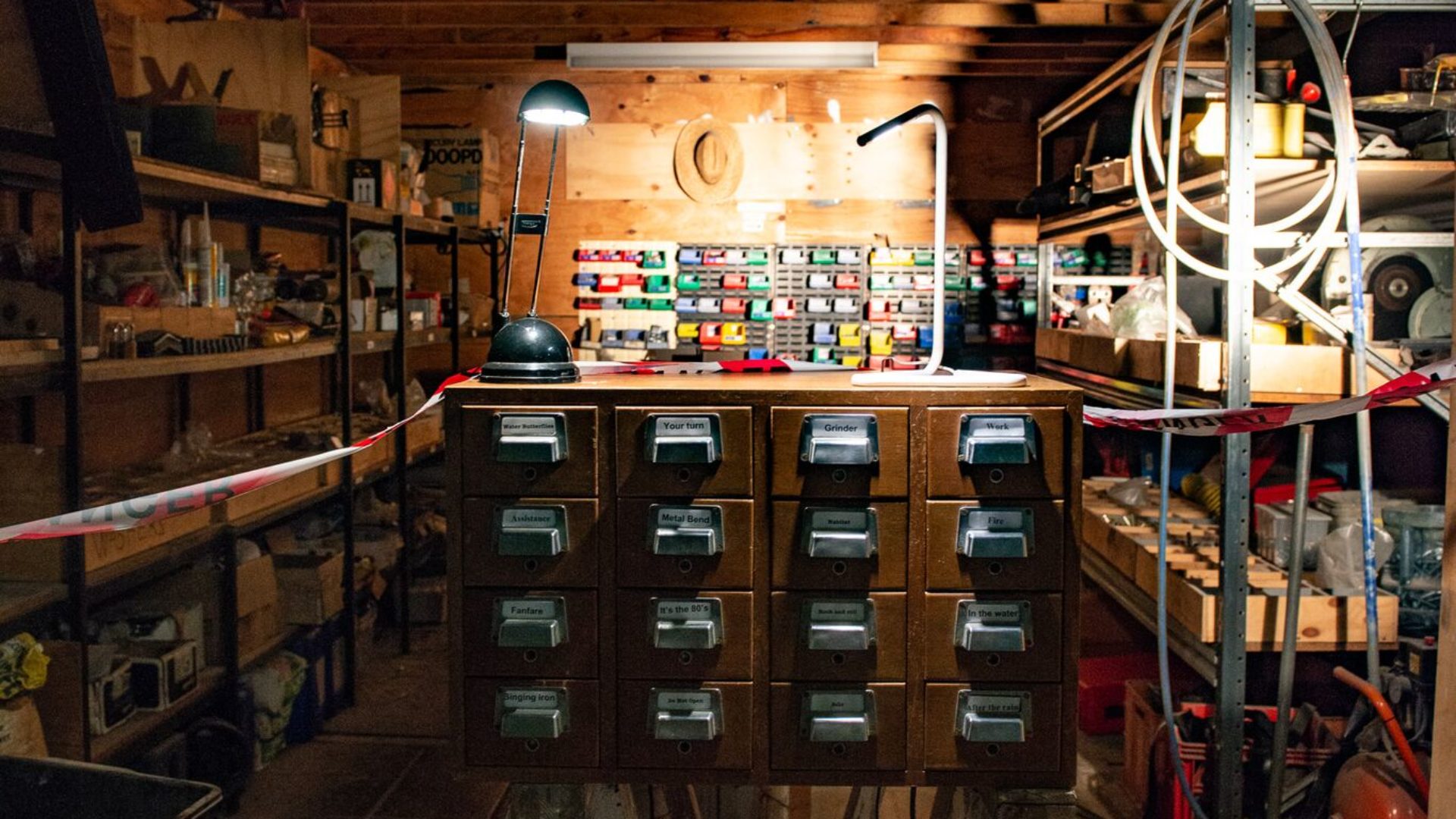Circles is a wooden box that contains a single-board computer and two micro-controllers. Bespoke software is written in Pure Data and Arduino, running on Linux. Sampling is via in-built microphone. Semi-random sequencing and the creative negotiation of imagined agency is the main agenda. The use of open-source tools is a new direction for me, but a conscious and important decision.
Focusing on real-time interaction and the multiple connotations of ‘performing technologies’ the goal is a situation where it is unclear whether I am performing the technology or it is performing me. This, to some extent, might seem to undermine what might be perceived as the autonomy of a musician. However, I am not attempting to remove my own agency from the creative process; this is not in any sense a ‘chance’ based approach, but one which involves maximum attention and involvement. My approach explores the features and quirks of digital systems, it pushes beyond the digital to digital-analogue hybrid systems, and it seeks renewal through continuous engagement. Less about being in control of a situation than about ways to find lifelike resonances with which to interact, the relationship between imagination, expectation and material is at the foreground.
Tilde~ Festival Melbourne (AU, 2017) , University of Derby (UK, 2016), QCGU (AU, 2016)
Standard sampling and studio practices (re-pitching, time-stretching, filtering, reverberation) play an obvious role, alongside live sampling, sequencing, and drum-machine-style synthesis. However, the main performance strategy revolves around parameters that can either be manipulated directly, or via a number of layers of variable semi-random/stochastic processes. This leads to subtleties, which gives the instrument much of its character.
Pure Data and Arduino are running via Linux and the current version contains an Odroid C1 connected via USB to both a Teensy LC and a 3.1 (with a quick hack of the Arduino software to recognize the two similar micro controllers independently). Although not evident in this initial video, live recording and playback of audio is as near to instantaneous as makes no difference.
My interest in open source technologies has emerged somewhat obliquely over the last few years as a follow up to activities that I have called ‘Feral Technologies’. These activities are perhaps best described as ‘Nicolas Collins style’ handmade electronic music i.e. hands-on making with electronic components and simple logic chips, but anything that one might recognize as ‘a computer’ was often banished. With Circles I negotiate DIY territory similar to ‘Feral Technologies’, but merge these ideas with aesthetic practices that I have developed through commercial systems such as Ableton software ‘Live’. Embracing computers once again, but in an embedded form, I explore my desire for the creative potential and flexibility of digital audio processing within the realm of an open-source DIY aesthetic.
Software
- ‘Circles’ software (all technical elements to re-make the project);
- ‘Circles-uncovered…. ‘ (individual software patches presented in easily-digestible chunks);
- Walkthrough of ‘Circles-uncovered…. ‘ patches on Vimeo.
Thanks
Circles emerged initially through my experiences as a member of Sonic Interaction & eXperience (SIX), which is a research group led by Shawn Greenlee that focuses on developing mobile and embedded-computing platforms at the Rhode Island School of Design (RISD). Further development was supported by a small research grant for the ‘Performative Affordances of Microelectronics’ which was awarded to Prof. Andrew Brown and I by the Queensland Conservatorium Research Centre in July 2015.
Technical rider
I am very flexible as regard to stage layout; the below is suitable for formal presentation, but if it is possible to be very close to or even situated amongst the audience in a more informal setting, this would make the projector unnecessary.
- I output via a single unbalanced ¼ inch stereo jack socket;
- PA system (some monitoring may be necessary depending on room/stage layout);
- Small table or robust music stand at a suitable height for performing standing up;
- Standard 240 volt power connection;
- In a formal concert setting a projector, video camera, and tripod should be provided and positioned so an audience is presented with a similar perspective to that offered by the included video documentation.
